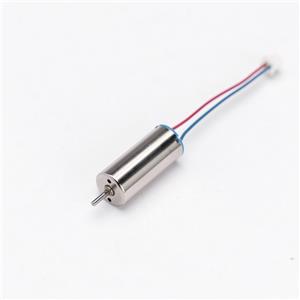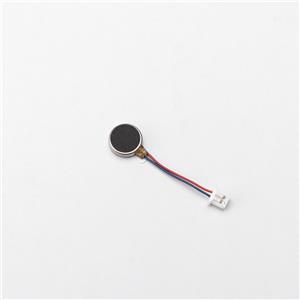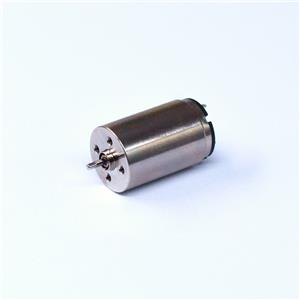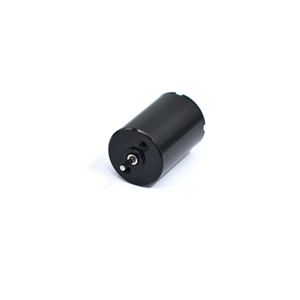What Is a Brushless Motor and How It Works: A Detailed Guide
A practical explanation of brushless motors (BLDC), their types, how they compare to brushed motors, how they operate, and where they’re used — from drones to EV systems.
What is a Brushless Motor?
If you’ve ever wondered what is a brushless motor, the short answer is: it’s an electric motor that removes the mechanical brushes and commutator found in traditional motors and uses electronic switching to energize the windings. Also commonly called a bldc motor, a brushless unit uses permanent magnets on the rotor and stationary copper windings in the stator. An electronic controller (ESC) sequences current to the stator coils, generating a rotating magnetic field that drags the rotor around — delivering torque without the mechanical wear of brushes.

Advantages of Brushless Motors
Higher efficiency: Less friction and more precise commutation reduce energy loss.
Longer lifespan: No brushes to replace means lower maintenance and fewer failure points.
Better power density: Improved torque-to-weight and compact footprint.
Quieter operation: No brush arcing and smoother commutation.
Precise control: Electronic controllers allow fine speed and torque regulation.
Disadvantages of Brushless Motors
Higher upfront cost: The motor plus controller is usually more expensive than a simple brushed motor.
Control complexity: You need an ESC and proper tuning — not a simple plug-and-play device for beginners.
Electronics dependency: Failure of the controller can disable the motor, so system design matters.
Types of Brushless Motors
Based on Design
In-runner BLDC motors have the rotor inside the stator and typically spin at very high RPMs — common in racing setups. Out-runner motors have the rotor outside the stator, delivering higher torque at lower speeds — widely used on multicopters and many consumer drones.
Based on Sensor Use
Sensored brushless motors include Hall-effect or other position sensors to give exact rotor location for smooth low-speed torque. Sensorless designs infer rotor position from back-EMF and are simpler and lighter — ideal for high-speed applications.
Based on Number of Poles
Single- and multi-pole designs change torque and speed characteristics. More poles generally give higher torque and smoother motion at lower RPMs.
Based on Type of Power Signal
Motors driven with sinusoidal waveforms run smoother at low speeds; trapezoidal commutation is simple and effective at higher speeds but can introduce torque ripple.
What Is the Difference Between Brushless and Brushed Motors
Table of Differences Between Brushed and Brushless Motors
| Feature | Brushed Motor | Brushless Motor |
|---|---|---|
| Commutation | Mechanical, using brushes and a commutator | Electronic, without brushes |
| Lifespan | Shorter due to brush wear | Longer, as there are no brushes to wear out |
| Speed and Acceleration | Medium, limited by mechanical factors | High, not limited by brushes or commutator |
| Efficiency | Lower, due to friction and energy loss in brushes | Higher, due to electronic commutation |
| Noise | Higher, due to brush contact | Lower, due to absence of mechanical contact |
| Electrical Noise | More, due to arcing at the brushes | Less, as there are no brushes |
| Maintenance | Requires more, due to brush wear | Less, mainly on bearings |
| Torque | Good, but can be inconsistent | Better and more consistent |
| Weight and Size | Generally larger for a given power output | Compact and lighter for equivalent power |
| Cost | Lower initial cost | Higher, due to complex electronics |
Detailed Comparison
Lifespan
Brushless machines typically last significantly longer because the primary wear element (the brush) is removed.
Speed and Acceleration
BLDC motors accelerate quicker and maintain higher top speeds with reduced heat buildup.
Efficiency
Eliminating brush friction and arcing improves electrical efficiency, which matters most in battery-powered systems.
Noise
Brushless designs run quieter — a key benefit for consumer electronics and drones.
Maintenance
Without brushes, scheduled service drops to mainly bearings and the controller firmware.
Torque
Electronic control offers more consistent torque delivery and the ability to shape torque curves for specific uses.
Weight and Size
For the same power, brushless motors are often lighter and more compact.
Cost
Initial purchase cost is higher, but lifetime cost can be lower thanks to reduced service and improved efficiency.
How Does a Brushless Motor Work
Construction of a Brushless Motor
A typical BLDC motor has a permanent-magnet rotor and a stator with several copper windings. The controller switches current between the stator windings in a timed sequence. Hall sensors or back-EMF detection tell the controller the rotor’s position so it can apply the next phase of current at the right time.
Why a Brushless Motor Turns
The motor turns because the applied currents create a rotating magnetic field in the stator that the rotor’s permanent magnets follow. The synchronous interaction between stator and rotor fields produces torque; by changing which windings are energized and when, the controller controls speed and direction. If you want a primer on conventional DC motors for comparison, see how does a DC motor work.
Applications of Brushless Motors
Brushless motors are now ubiquitous. Their efficiency, power density, and control make them suitable across many fields.
Aerospace and Defense
Used in actuators, control surfaces, and propulsion for small UAVs where reliability is essential.
Automotive and Electric Vehicles
BLDC motors power traction systems, auxiliaries, and HVAC blowers — contributing to improved range and reliability.
Industrial and Manufacturing
High-performance servos and spindle drives rely on brushless designs for precision and uptime.
Marine
Propulsion and thruster systems use IP-rated brushless motors for corrosion resistance and efficiency.
Medical Devices
Quiet operation and precise speed control make BLDC ideal for diagnostic and surgical equipment.
Consumer Electronics
From cordless tools to advanced vacuum cleaners, brushless motors extend battery life and durability.
Robotics & Drones
One of the most visible uses is in unmanned aircraft. A brushless motor drone commonly uses lightweight out-runner motors. Whether you’re choosing a brushless motor for drone racing or heavy-lift photography, BLDC motors deliver the power-to-weight and responsiveness drone pilots need. If you design smaller devices you might also evaluate hobby-level parts or specialist vendors — for example, we source related small motors from a trusted hollow cup motor manufacturer when brushed alternatives are required.
FAQs
What Does Kv Mean for Brushless Motors?
KV is the motor’s RPM per volt with no load. It helps match motors to propellers and battery voltages — high KV for smaller props/high speed; low KV for larger props/high torque.
Are Brushless Motors Waterproof?
Some brushless motors are built with waterproof housings and rated IP protection. Check the motor’s IP rating before using it in wet environments.
How to Calculate ESC for Brushless Motor?
Choose an ESC with a current rating higher than the motor’s maximum current draw and a voltage rating equal to or greater than the motor’s battery configuration. Giving the ESC a safety margin (20–30%) improves reliability.
Define Brushless Motor / What Does a Brushless Motor Mean?
To define brushless motor simply: it’s an electric motor that eliminates carbon brushes and uses electronic commutation to energize stator windings. If you ask “what does a brushless motor mean,” this definition captures the essential difference from brushed motors.
How Does a Brushless Motor Work?
Electronic commutation switches current through stator coils in precise timing sequences so the rotor’s permanent magnets are pulled and pushed around the stator, producing rotation. This answer to how does a brushless motor work emphasizes timing and magnetic interaction as the key principles.
Which Motor for My Drone?
For UAVs, a drone brushless motor selection depends on payload, propeller size, and flight time. Racing drones use high-KV small motors; photography drones favor lower-KV, higher-torque motors for stability and efficiency.




